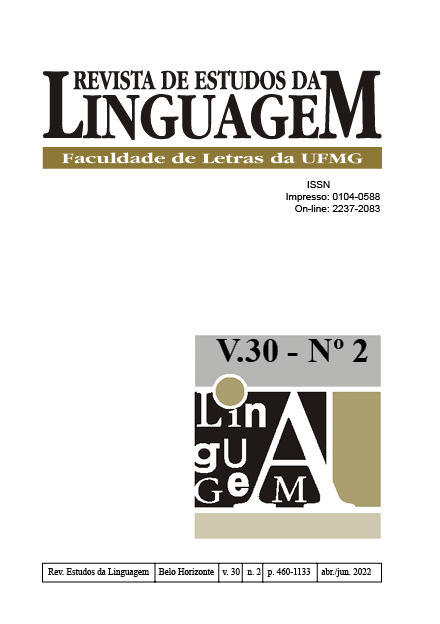A polissemia da construção relacional binominal SN1 de SN2 no Português Brasileiro
DOI:
https://doi.org/10.17851/2237-2083.30.2.808-842Palavras-chave:
possessivos, Gramática de Construções, Linguística Baseada no UsoResumo
Neste trabalho, buscamos descrever a construção relacional binominal do tipo SN1 de SN2 no português brasileiro, em termos dos diferentes sentidos associados a ela, tais como parte-todo, localização, especialização etc. A hipótese geral é a de que esses sentidos compartilham propriedades entre si e formam um continuum entre dois domínios – o da POSSE e o da TIPIFICAÇÃO. Baseamos nossa análise no argumento de que construções do tipo SN1 de SN2 se relacionam a um esquema que evoca a habilidade de ponto de referência, nos termos de Langacker (1991; 2003). Em termos teórico-epistemológicos, partimos da perspectiva da Linguística Baseada no Uso. Para demonstrar a polissemia da construção, foi feita uma análise qualitativa de dados no Corpus do Português, em que se procurou descrever como os diferentes sentidos se relacionam e se distribuem daqueles mais prototipicamente associados ao domínio da POSSE, passando pelos que vão se distanciando das relações possessivas e chegando até os mais prototípicos do domínio da TIPIFICAÇÃO.





